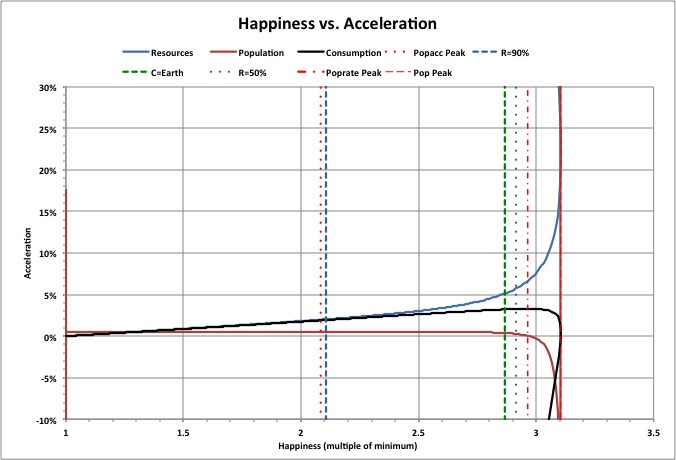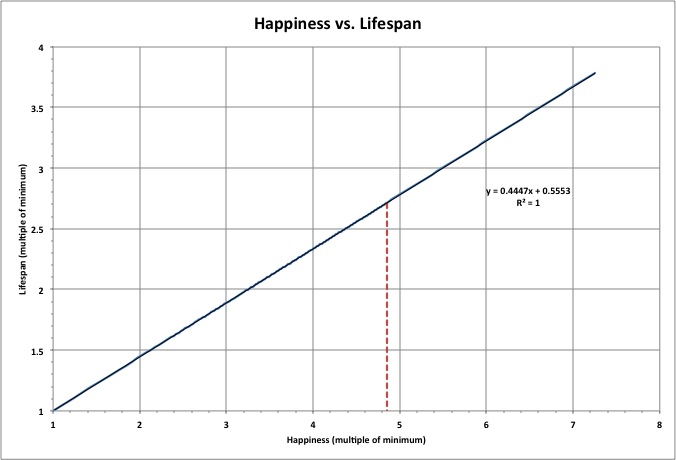Note that per-capita consumption (resources used per year per person) has the same rates as population because two are proportional to each other. For the same reason, transport speed is has the same rates as consumption (total).
For reference, happiness when the remaining resources are 50% of their original amount (R=50%) is shown, along with the happiness associated with the world consuming all natural capacity is shown (C=Earth). The population growth rate has reached its maximum (Poprate Peak) before happiness triples its minimum amount.
The happiness associated with when 10% of initial resources had been consumed (R=90%) is also shown, which occurs about the same time that the population stops accelerating (Popacc Peak). When the population reaches its maximum (Pop Peak), which occurs as its acceleration is switching from negative to positive, there will be 10% of the initial resources remaining.
This appears to show a correlation between happiness, resources, and population growth, suggesting that how we feel about our lives is linked to the amount of resources we have consumed.
A similar observation can be made about lifespan (life expectancy), as shown below, which is linearly related to happiness. Note that minimum lifespan is 37.1 years. |


